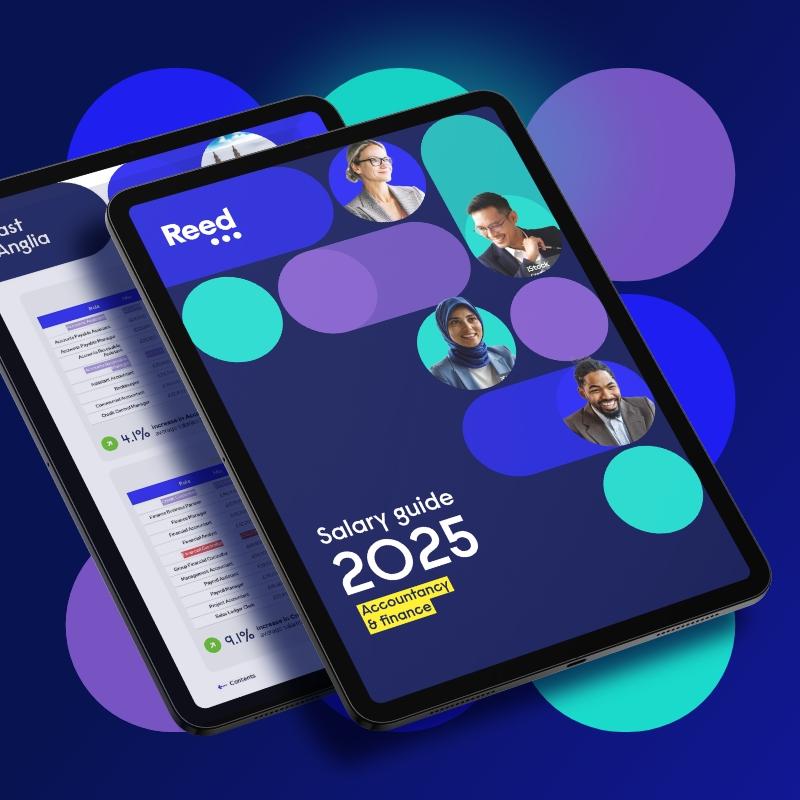LinkedIn is an extremely powerful tool for networking, showcasing your experience and building your reputation. There are almost a billion members on the platform, and 58 million registered companies. Let’s face it, it’s a go-to place for recruiters around the world.
LinkedIn has gone from a formal, corporate digital space to a platform used by many to share their life’s work and more. It’s all about crafting a personal brand – something that shows off your skills, experience and achievements in the most compelling, professional way.
With scope for so much more than a dry CV, LinkedIn provides the space to sell your skills and talents, allowing peers and potential employers a 3D view. It might even be their first impression of you – drawing their interest in what you have to offer – so it’s vital to consider the presentation of your ‘shopfront’ before overhauling your profile.
If your CV is awash with professional qualifications and abbreviations, from CA to ACCA, LinkedIn is the perfect place to illustrate how you’ve put them to use.
LinkedIn profile tips for success
Start with a professional profile photo: Profile pictures on any social media account are a personal choice – not everyone wants a photographic presence, and it is unlikely to make any difference to the role of an accountancy professional. If you do choose a photo, opt for a clear and professional headshot, preferably in business attire, with a neutral background. Remember to smile!
Add a headline: Your headline should be concise and convey your profession and areas of expertise. Use keywords to boost visibility of your profile in searches – which might be:
Chief Financial Officer: Scale-up tech sector specialist
Finance Director | Web based services
Financial Controller: Helping deliver outstanding financial management
Certified Public Accountant | Serving the financial services industry
Certified Public Accountant specialising in taxation and financial reporting
Write a summary that highlights your strengths: You have a maximum of 2,000 characters (around 300-500 words) to create your LinkedIn summary. Try to aim for roughly three sentences to outline your accountancy skills, experience, strengths and career achievements. It should be written from an objective point of view and focus on how you can bring value to a potential employer. Include relevant keywords. It might say: ‘Creative and passionate, results-driven individual that helps companies control and manage their finances.’
LinkedIn uses an algorithm that means your profile may rank higher in searches than others with the same job – it’s all about the language you use to stand out from the crowd, so try to avoid overused phrases. Using a free keyword search tool can help you discover what people are searching for the most.
Customise your URL: LinkedIn allows you to personalise your URL, so you can remove the numbers that may currently be within it, to make it easier to share. When you join LinkedIn, you’ll usually be assigned a URL that contains parts of your first and last name along with a bunch of numbers. Where possible, remove the numbers and make your URL your full first and last name. If this is taken, try adding a middle initial or the industry you work in. Remember to update your new LinkedIn URL on your websites, business cards, and other social media networks.
Consider including your industry and location: Adding your location to your profile boosts your visibility in searches by up to 23 times and helps potential connections/recruiters find you. When recruiters go looking for new talent, location is a key factor – it helps the hiring manager narrow their search and increases your chances of being found.
Showcase your experience: List your past accountancy work experience in reverse chronological order, including your job title, company name, and role responsibilities. Highlight your accomplishments and achievements in each role.
I would not tend to regurgitate your CV, but make sure you list your key achievements and use keywords that will ensure you are picked up in searches by prospective recruiters. On a CV, your last 15 years is important, but with LinkedIn you can add as much experience as you like.
One thing I highly recommend is to remove work experience which is no longer relevant to your current profession as it may create ambiguity among the viewers.
Always link your job to the company page on LinkedIn.
Add a specific job title.
Add a description to each work experience.
Use keywords in your description.
Include your education and professional certifications: List your educational background, including the degrees and certifications you’ve earned. Highlight any relevant courses or training you’ve completed. While adding an educational institute name in your education section, consider:
Entering any extracurricular activities you participated in while attending.
Entering any awards or honours you received.
Adding rich media such as links or documents to showcase any work undertaken during your time there.
Featured section: This is your chance to showcase your knowledge and thought leadership around your role and industry. You can use the featured section on your profile to showcase the best samples of your work, evidencing your skills and experience.
Include any articles you have written and posts you have created that will resonate with your network, alongside any links to articles/external publications you have published. If you were an integral part of creating revenue and enhanced cash flow for your employer, this would be a great area to showcase that.
Share your skills: One of the most important parts of your LinkedIn profile is your skill list. Did you know that you can add a whole host of key skills to your profile, and even attain endorsements from ex-colleagues and managers?
Adding at least five relevant skills in this section makes you 31 times more likely to be messaged by your connections, but you can add as many as you like. Be warned, the number of skills available on LinkedIn makes it easy to go over the top and inundate your profile with talents that are only vaguely related to your current work. Make sure they’re relevant to your career, such as:
Project management | Planning and execution | Account management | SEC reporting| Audit management| Profit maximisation | Cost control and reduction | Procedure development | Team leadership | Financial reporting | Budget planning | Private equity | Venture capital | Mergers & acquisitions
Request recommendations: A powerful tool in building your professional reputation, recommendations can be sought from former colleagues, supervisors, mentors, tutors, employers or clients to endorse your skills and work ethic. Be courteous even if they decline.
Engage with your network: Stay active on LinkedIn by sharing relevant articles, commenting on posts, and participating in industry groups. This helps expand your network and increase your visibility.
Employers may scan the latest content you have shared, commented on and ‘liked’ on LinkedIn, so be sure to keep it of a professional nature, perhaps highlighting a particular area of interest in the industry. Items from professional magazines or attendance at lectures and seminars, or references to courses you’re taking/considering are ideal and shows a growth mindset. If you can demonstrate a level of knowledge beyond your qualifications, this will be beneficial in interviews and in developing relationships with potential employers.
Building connections: Link in with people in your field who could potentially provide you with useful advice and job opportunities. It doesn’t matter how many connections you have on LinkedIn – even if you have only just created a profile it won’t take long to build them if you’re regularly engaged on the platform.
Consider uploading your CV: While the platform acts as your CV, it is still possible to upload one to improve your chances of finding a suitable role but remember to keep it in sync with the information on LinkedIn. The two should work hand in hand. If you’re yet to enter the world of work, highlight any experience or hobbies that shows your financial acumen or ability to take responsibility in societies, clubs or casual work. Above all, don’t forget to remove any sensitive information.
Make sure you are visible: You need to make sure that LinkedIn is working for you, and this can be changed and amended accordingly in your profile settings. Here you can see what's visible to the public on your profile and turn certain sections on and off. You can also control who can see your connections lists, and, if you want to, can restrict the visibility of your personal network.
LinkedIn is a two-way street, allowing you to research potential employers before applying for roles, just as they might research you. As well as viewing job postings, you can connect with employees at a company, and check reviews by current and former employees.
Dress for the job you want
In recent years, many professionals are using LinkedIn to promote themselves and their experiences in a more personal manner – a trend that took off during the pandemic. Some users are finding human stories draw more engagement than corporate posts, and informality is much more common. While this approach may be good for professionals in marketing or other creative industries, accountancy remains steeped in tradition and formality – and if you’ve done your research and know the type of employers you want to attract and engage with, it’s vital to craft your personal brand accordingly.
Looking for an accountancy professional for your business or considering your next career move? Contact our specialist consultants today.



